Research on the Potential of Forestry’s Carbon-Neutral Contribution in China from 2021 to 2060
Abstract
:1. Introduction
2. Materials and Methods
2.1. Calculation of Forest Carbon-Neutral Contribution
2.2. Calculation of China’s Forest Carbon Sequestration Potential
2.2.1. The Relationship between Above-Ground Biomass Density and Stand Age
2.2.2. Prediction of Forest Above-Ground Biomass Carbon Pool
2.2.3. Calculation of Forest Carbon Sequestration
2.2.4. Calculation Scenario
2.3. Estimation of CO2 Emissions
2.4. Data Sources
2.4.1. Forest Resource Data
2.4.2. Carbon Dioxide Emission Data
3. Results
3.1. Modelled Coefficient of the Relationship between Biomass Density and the Forest Age
3.2. Status of China’s Forest Carbon Storage
3.3. Forecasted Forest Carbon Storage in China
3.4. CO2 Emissions Forecast for NDC Scenario
3.5. Forecast of Forestry Contributions toward Carbon Neutrality in China
4. Discussion
4.1. Evaluating the Reliability of Modeled Outcomes
4.1.1. Accuracy in Estimating Carbon Pool Potential
4.1.2. Accuracy in CO2 Emission Prediction
4.1.3. Deviation Factors in Carbon Sequestration Estimation
4.2. Analysis of Spatial and Territorial Characteristics of Forestry Carbon Sequestrations
4.3. Analysis of the Opportunities and Barriers of Forestry Carbon Sequestration in China
5. Conclusions
Author Contributions
Funding
Institutional Review Board Statement
Informed Consent Statement
Data Availability Statement
Conflicts of Interest
References
- Forest Trend. Demand for Nature-based Solutions for Climate Drives Voluntary Carbon Markets to a Seven-Year High. Available online: https://www.forest-trends.org/pressroom/demand-for-nature-based-solutions-for-climate-drives-voluntary-carbon-markets-to-a-seven-year-high/ (accessed on 9 September 2021).
- Le, Q.C.; Andrew, R.M.; Friedlingstein, P.; Sitch, S.; Pongratz, J.; Manning, A.C.; Korsbakken, J.I.; Peters, G.P.; Canadell, J.G.; Jackson, R.B.; et al. Global carbon budget 2017. Earth Syst. Sci. Data 2018, 10, 405–448. [Google Scholar] [CrossRef] [Green Version]
- BP. Statistical Review of World Energy. Available online: https://www.bp.com/content/dam/bp/business-sites/en/global/corporate/pdfs/energy-economics/statistical-review/bp-stats-review-2021-full-report.pdf (accessed on 18 April 2022).
- United Nations Framework Convention on Climate Change. NDC Registry. Available online: https://www4.unfccc.int/sites/ndcstaging/Pages/Party.aspx?party=CHN&prototype=1 (accessed on 21 November 2021).
- Food and Agriculture Organization of the United Nations. Global Forest Resources Assessment 2020: Main Report. 2020. Available online: http://www.fao.org/3/ca9825en/ca9825en.pdf (accessed on 20 September 2021).
- National Bureau of Statistics. Available online: https://data.stats.gov.cn/easyquery.htm?cn=C01&zb=A0C08&sj=2021 (accessed on 18 April 2022).
- State Forestry and Grassland Administration. China Forest Resources Report 2014–2018; China Forestry Press: Beijing, China, 2019; ISBN 978-7-5038-9982-9. [Google Scholar]
- Xu, B.; Guo, Z.; Piao, S.; Fang, J. Biomass carbon stocks in China’s forests between 2000 and 2050: A prediction based on forest biomass-age relationships. Sci. China Life Sci. 2010, 53, 776–783. [Google Scholar] [CrossRef] [PubMed]
- Qiu, Z.; Feng, Z.; Song, Y.; Li, M.; Zhang, P. Carbon sequestration potential of forest vegetation in China from 2003 to 2050: Predicting Forest vegetation growth based on climate and the environment. J. Clean. Prod. 2020, 252, 119715. [Google Scholar] [CrossRef]
- Li, Q.; Zhu, J.H.; Feng, Y.; Xiao, W.-F. Carbon storage and carbon sequestration potential of the forest in China. Adv. Clim. Chang. Res. 2018, 14, 287. [Google Scholar] [CrossRef]
- National Forestry and Grassland Administration. National Forest Management Plan (2016–2050). Available online: http://www.forestry.gov.cn/uploadfile/main/2016-7/file/2016-7-27-5b0861f937084243be5d17399f5f5f71.pdf (accessed on 17 April 2022).
- Fang, J.; Guo, Z.; Piao, S.; Chen, A. Terrestrial vegetation carbon sinks in China, 1981–2000. Sci. China Ser. D Earth Sci. 2007, 50, 1341–1350. [Google Scholar] [CrossRef]
- Li, H.K.; Zhao, P.X.; Lei, Y. Comparison on estimation of wood biomass using forest inventory data. Sci. Silvae Sin. 2012, 48, 44–52. [Google Scholar]
- Jin, W.; Li, Z.J.; Wei, L.S.; Zhen, H. The improvements of BP neural network learning algorithm//WCC 2000-ICSP 2000. In Proceedings of the 2000 5th International Conference on Signal Processing Proceedings. 16th World Computer Congress 2000, Beijing, China, 21–25 August 2000. [Google Scholar]
- Plaut, D.C.; Nowlan, S.J.; Hinton, G.E. Experiments on learning by Backpropagation Technical Report CMU–CS–86–126; Computer Science Department, Carnegie-Mellon University: Pittsburgh, PA, USA, 1986; Volume 22. [Google Scholar]
- Penman, J.; Gytarsky, M.; Hiraishi, T.; Krug, T.; Kruger, D.; Pipatti, R.; Buendia, L.; Miwa, K.; Ngara, T.; Tanabe, K.; et al. Good Practice Guidance for Land Use, Land-Use Change and Forestry. Available online: https://www.ipcc-nggip.iges.or.jp/public/gpglulucf/gpglulucf_files/GPG_LULUCF_FULL.pdf (accessed on 17 April 2022).
- Rehman, A.; Ma, H.; Ozturk, I.; Ulucak, R. Sustainable development and pollution: The effects of CO2 emission on population growth, food production, economic development, and energy consumption in Pakistan. Environ. Sci. Pollut. Res. 2021, 29, 17319–17330. [Google Scholar] [CrossRef]
- Rehman, A.; Ma, H.; Chishti, M.Z.; Ozturk, I.; Irfan, M.; Ahmad, M. Asymmetric investigation to track the effect of urbanization, energy utilization, fossil fuel energy and CO2 emission on economic efficiency in China: Another outlook. Environ. Sci. Pollut. Res. 2021, 28, 17319–17330. [Google Scholar] [CrossRef] [PubMed]
- Duan, F.M. Scenario Prediction and Peak Characteristics of China’s CO2 Emission Peak–BP Neural Network Analysis Based on Particle Swarm Optimization Algorithm. 2018. Available online: https://kns.cnki.net/kcms/detail/detail.aspx?dbcode=CJFD&dbname=CJFDLAST2018&filename=DBCD201805003&uniplatform=NZKPT&v=FGrJbI3aXLTLGDxPkU_6eIjf_JlzlqD2WjRsINw3SZ2aV_NSvjnZgMQ4WT6cPnHn (accessed on 14 November 2021).
- GB/T 38590-2020; Technical Regulations for Continuous Forest Inventory. China Quality Inspection Press: Beijing, China, 2020.
- National Bureau of Statistics. China Statistical Yearbook. Available online: http://www.stats.gov.cn/tjsj/ndsj/ (accessed on 10 November 2021).
- British Petroleum. Statistical Review of World Energy. 2021. Available online: https://www.bp.com/en/global/corporate/energy-economics/statistical-review-of-world-energy.html (accessed on 3 January 2022).
- Shan, Y.; Guan, D.; Zheng, H.; Ou, J.; Li, Y.; Meng, J.; Mi, Z.; Liu, Z.; Zhang, Q. China CO2 emission accounts 1997–2015. Sci. Data 2018, 5, 170201. [Google Scholar] [CrossRef] [Green Version]
- Shan, Y.; Huang, Q.; Guan, D.; Hubacek, K. China CO2 emission accounts 2016–2017. Sci. Data 2020, 7, 1–9. [Google Scholar] [CrossRef] [Green Version]
- State Grid Energy Research Institute. China’s Energy and Power Development Prospect 2020; State Grid Energy Research Institute: Beijing, China, 2020. [Google Scholar]
- General Office of the State Council. Opinions on The Complete and Accurate Implementation of The New Development Concept to Do a Better Work in The Carbon Peak and Carbon Neutral. Available online: http://www.gov.cn/zhengce/2021-10/24/content_5644613.htm (accessed on 10 November 2021).
- Li, M.; Liu, H.; Geng, G.; Hong, C.; Liu, F.; Song, Y.; Tong, D.; Zheng, B.; Cui, H.; Man, H.; et al. Anthropogenic emission inventories in China: A review. Natl. Sci. Rev. 2017, 4, 834–866. [Google Scholar] [CrossRef]
- Zheng, B.; Tong, D.; Li, M.; Liu, F.; Hong, C.; Geng, G.; Li, H.; Li, X.; Peng, L.; Qi, J.; et al. Trends in China’s anthropogenic emissions since 2010 as the consequence of clean air actions. Atmos. Chem. Phys. 2018, 18, 14095–14111. [Google Scholar] [CrossRef] [Green Version]
- Zhang, F.; Xu, N.; Wu, F. Research on China’s CO2 emissions projections from 2020 to 2100 under the shared socioeconomic pathways. Acta Ecol. Sin. 2021, 41, 9691–9704. [Google Scholar] [CrossRef]
- Pathak, M.; Slade, R.; Shukla, P.R.; Skea, J.; Pichs-Madruga, R.; Ürge-Vorsatz, D. 2022: Technical Summary. In Climate Change 2022: Mitigation of Climate Change; Contribution of Working Group III to the Sixth Assessment Report of the Intergovernmental Panel on Climate Change; Cambridge University Press: Cambridge, UK; New York, NY, USA, 2022. [Google Scholar] [CrossRef]
- Clark, K.E.; West, A.J.; Hilton, R.G.; Asner, G.P.; Quesada, C.A.; Silman, M.R.; Saatchi, S.S.; Farfan-Rios, W.; Martin, R.E.; Horwath, A.B.; et al. Storm-triggered landslides in the Peruvian Andes and implications for topography, carbon cycles, and biodiversity. Earth Surf. Dyn. 2016, 4, 47–70. [Google Scholar] [CrossRef] [Green Version]
- Murata, K.; Nakano, M.; Miyazaki, K.; Yamada, N.; Yokoo, Y.; Yokoo, K.; Umemura, K.; Nakamura, M. Utilization of Chinese fast-growing trees and the effect of alternating lamination using mixed-species eucalyptus and poplar veneers. J. Wood Sci. 2021, 67, 1–8. [Google Scholar] [CrossRef]
- Smith, C.C.; Espírito-Santo, F.D.B.; Healey, J.R.; Young, P.J.; Lennox, G.D.; Ferreira, J.; Barlow, J. Secondary forests offset less than 10% of deforestation-mediated carbon emissions in the Brazilian Amazon. Glob. Chang. Biol. 2020, 26, 7006–7020. [Google Scholar] [CrossRef]
- Tang, X.; Zhao, X.; Bai, Y.; Tang, Z.; Wang, W.; Zhao, Y.; Wan, H.; Xie, Z.; Shi, X.; Wu, B.; et al. Carbon pools in China’s terrestrial ecosystems: New estimates based on an intensive field survey. Proc. Natl. Acad. Sci. USA 2018, 115, 4021–4026. [Google Scholar] [CrossRef] [Green Version]
- Liu, W.; Lu, F.; Luo, Y.; Bo, W.; Kong, L.; Zhang, L.; Liu, B.; Ouyang, Z.; Wang, X. Human influence on the temporal dynamics and spatial distribution of forest biomass carbon in China. Ecol. Evol. 2017, 7, 6220–6230. [Google Scholar] [CrossRef] [Green Version]
- Endreny, T.A. Strategically growing the urban forest will improve our world. Nat. Commun. 2018, 9, 1160. [Google Scholar] [CrossRef] [Green Version]
- Fahey, R.T.; Alveshere, B.C.; Burton, J.; D’Amato, A.W.; Dickinson, Y.L.; Keeton, W.S.; Kern, C.C.; Larson, A.J.; Palik, B.; Puettmann, K.J.; et al. Shifting conceptions of complexity in forest management and silviculture. For. Ecol. Manag. 2018, 421, 59–71. [Google Scholar] [CrossRef]
- Forest Trend, Forest trend Impact Report 2020. Available online: https://www.forest-trends.org/wp-content/uploads/2020/12/FT-Impact-Report-2020.pdf (accessed on 12 September 2021).
- Forest Trend. Available online: https://www.forest-trends.org/wp-content/uploads/2020/07/doc_5756_rev_web.pdf (accessed on 12 September 2021).
- China Certified Emission Reduction Exchange Info-Platform. Available online: https://cdm.ccchina.org.cn (accessed on 21 November 2021).
- Fleischman, F.; Basant, S.; Fischer, H.; Gupta, D.; Lopez, G.G.; Kashwan, P.; Powers, J.S.; Ramprasad, V.; Rana, P.; Rastogi, A.; et al. How politics shapes the outcomes of forest carbon finance. Curr. Opin. Environ. Sustain. 2021, 51, 7–14. [Google Scholar] [CrossRef]
- Rode, J.; Pinzon, A.; Stabile, M.C.; Pirker, J.; Bauch, S.; Iribarrem, A.; Sammon, P.; Llerena, C.A.; Alves, L.M.; Orihuela, C.E.; et al. Why ‘blended finance’ could help transitions to sustainable landscapes: Lessons from the Unlocking Forest Finance project. Ecosyst. Serv. 2019, 37, 100917. [Google Scholar] [CrossRef]
- Monasterolo, I.; Battiston, S.; Janetos, A.C.; Zheng, Z. Vulnerable yet relevant: The two dimensions of climate-related financial disclosure. Clim. Chang. 2017, 145, 495–507. [Google Scholar] [CrossRef] [Green Version]
- Harris, N.L.; Gibbs, D.A.; Baccini, A.; Birdsey, R.A.; de Bruin, S.; Farina, M.; Fatoyinbo, L.; Hansen, M.C.; Herold, M.; Houghton, R.A.; et al. Global maps of twenty-first century forest carbon fluxes. Nat. Clim. Chang. 2021, 11, 234–240. [Google Scholar] [CrossRef]
- Kruid, S.; Macedo, M.N.; Gorelik, S.R.; Walker, W.; Moutinho, P.; Brando, P.M.; Castanho, A.; Alencar, A.; Baccini, A.; Coe, M.T. Beyond Deforestation: Carbon Emissions From Land Grabbing and Forest Degradation in the Brazilian Amazon. Front. For. Glob. Chang. 2021, 4, 645282. [Google Scholar] [CrossRef]
- Santika, T.; Meijaard, E.; Budiharta, S.; Law, E.A.; Kusworo, A.; Hutabarat, J.A.; Indrawan, T.P.; Struebig, M.; Raharjo, S.; Huda, I.; et al. Community forest management in Indonesia: Avoided deforestation in the context of anthropogenic and climate complexities. Glob. Environ. Chang. 2017, 46, 60–71. [Google Scholar] [CrossRef]
- Tour, J.M.; Kittrell, C.; Colvin, V.L. Green carbon as a bridge to renewable energy. Nat. Mater. 2010, 9, 871–874. [Google Scholar] [CrossRef]
- Bryan, B.A.; Gao, L.; Ye, Y.; Sun, X.; Connor, J.D.; Crossman, N.D.; Stafford-Smith, M.; Wu, J.; He, C.; Yu, D.; et al. China’s response to a national land-system sustainability emergency. Nature 2018, 559, 193–204. [Google Scholar] [CrossRef]
- Yu, J.; Wu, J. The Sustainability of Agricultural Development in China: The Agriculture–Environment Nexus. Sustainability 2018, 10, 1776. [Google Scholar] [CrossRef] [Green Version]
- Sinha, R.K.; Chaturvedi, N.D. A review on carbon emission reduction in industries and planning emission limits. Renew. Sustain. Energy Rev. 2019, 114, 109304. [Google Scholar] [CrossRef]
- Qazi, A.; Hussain, F.; Rahim, N.A.; Hardaker, G.; Alghazzawi, D.; Shaban, K.; Haruna, K. Towards Sustainable Energy: A Systematic Review of Renewable Energy Sources, Technologies, and Public Opinions. IEEE Access 2019, 7, 63837–63851. [Google Scholar] [CrossRef]
- Azarkamand, S.; Wooldridge, C.; Darbra, R.M. Review of initiatives and methodologies to reduce CO2 emissions and climate change effects in ports. Int. J. Environ. Res. Public Health 2020, 17, 3858. [Google Scholar] [CrossRef] [PubMed]
- Correa, D.F.; Beyer, H.L.; Fargione, J.E.; Hill, J.; Possingham, H.; Thomas-Hall, S.R.; Schenk, P.M. Towards the implementation of sustainable biofuel production systems. Renew. Sustain. Energy Rev. 2019, 107, 250–263. [Google Scholar] [CrossRef]
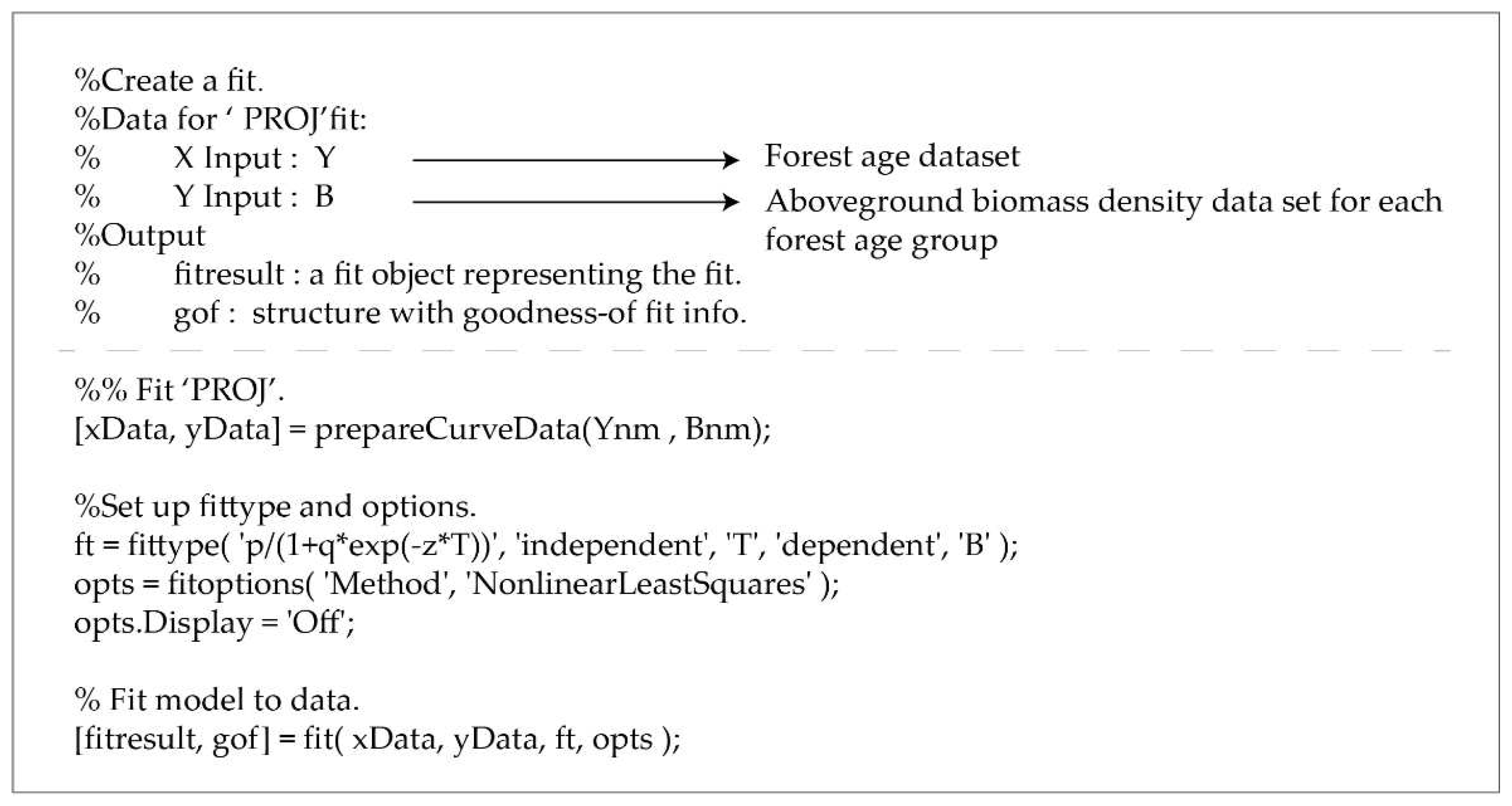
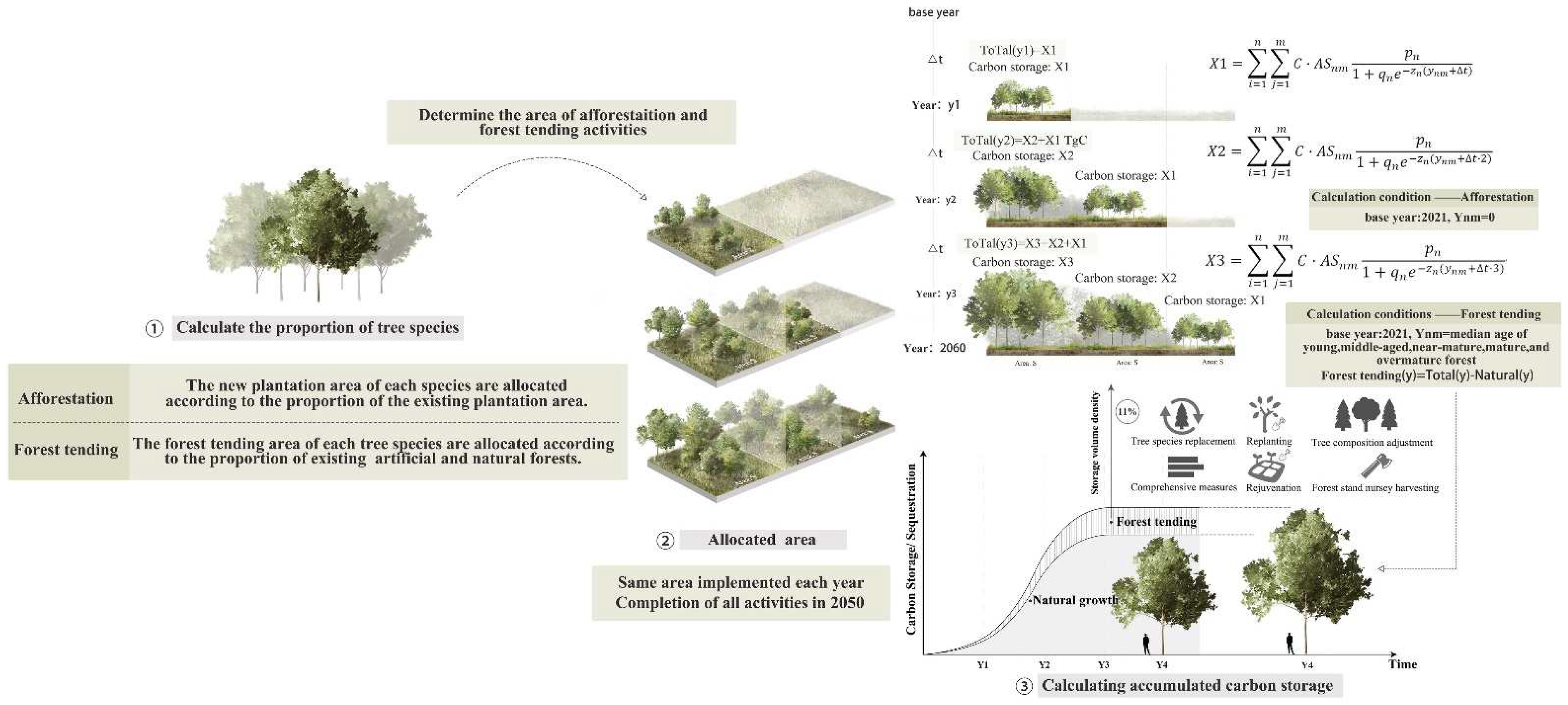
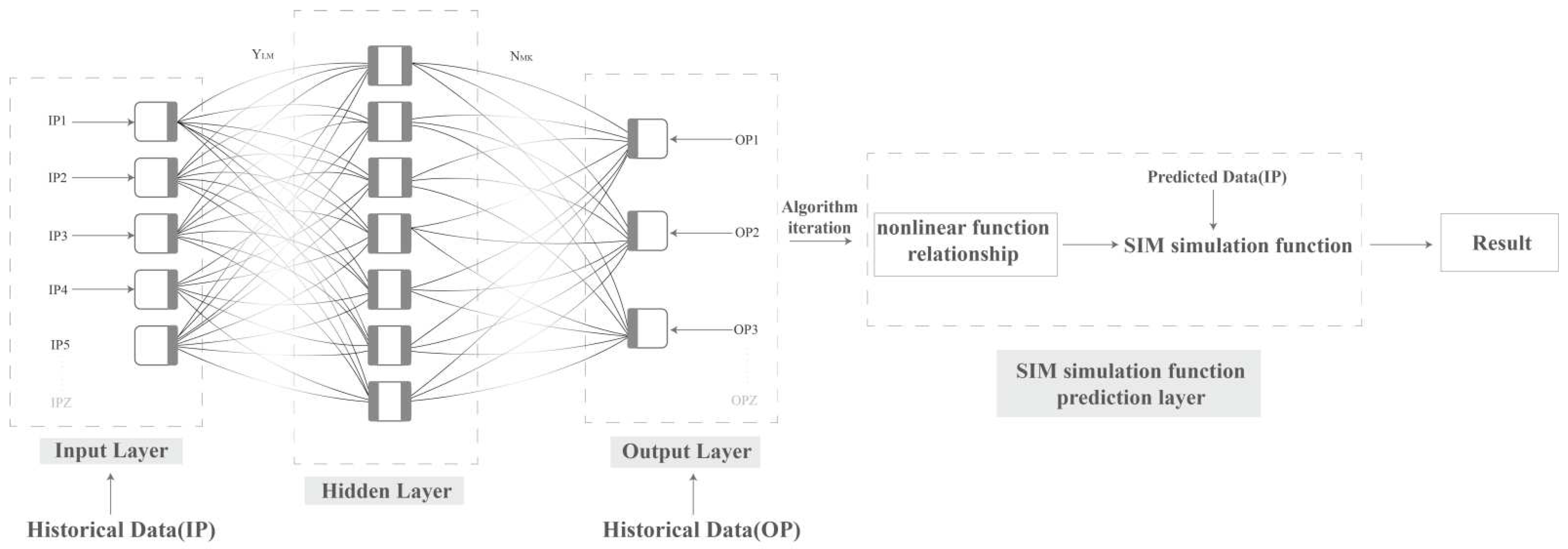

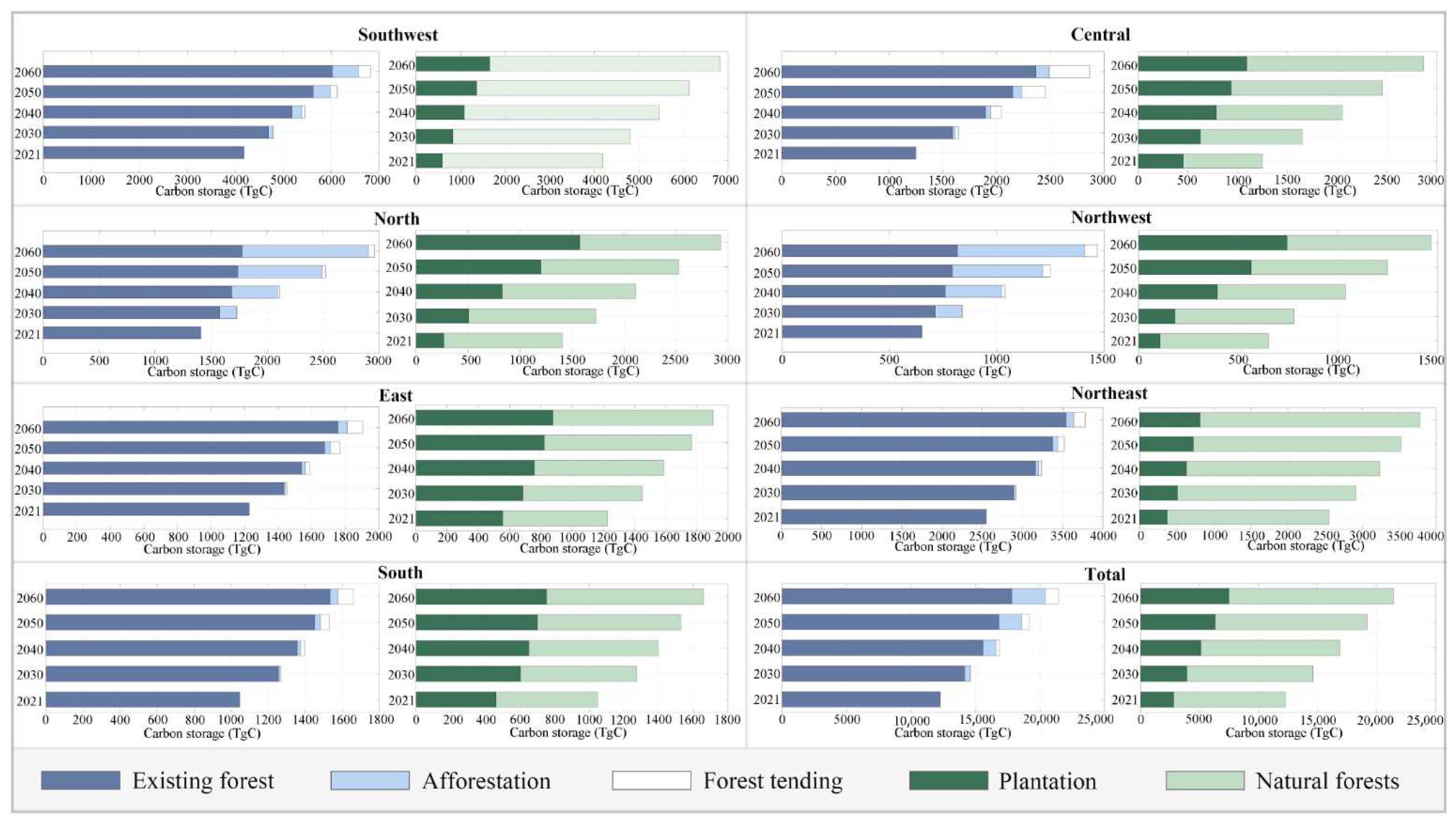

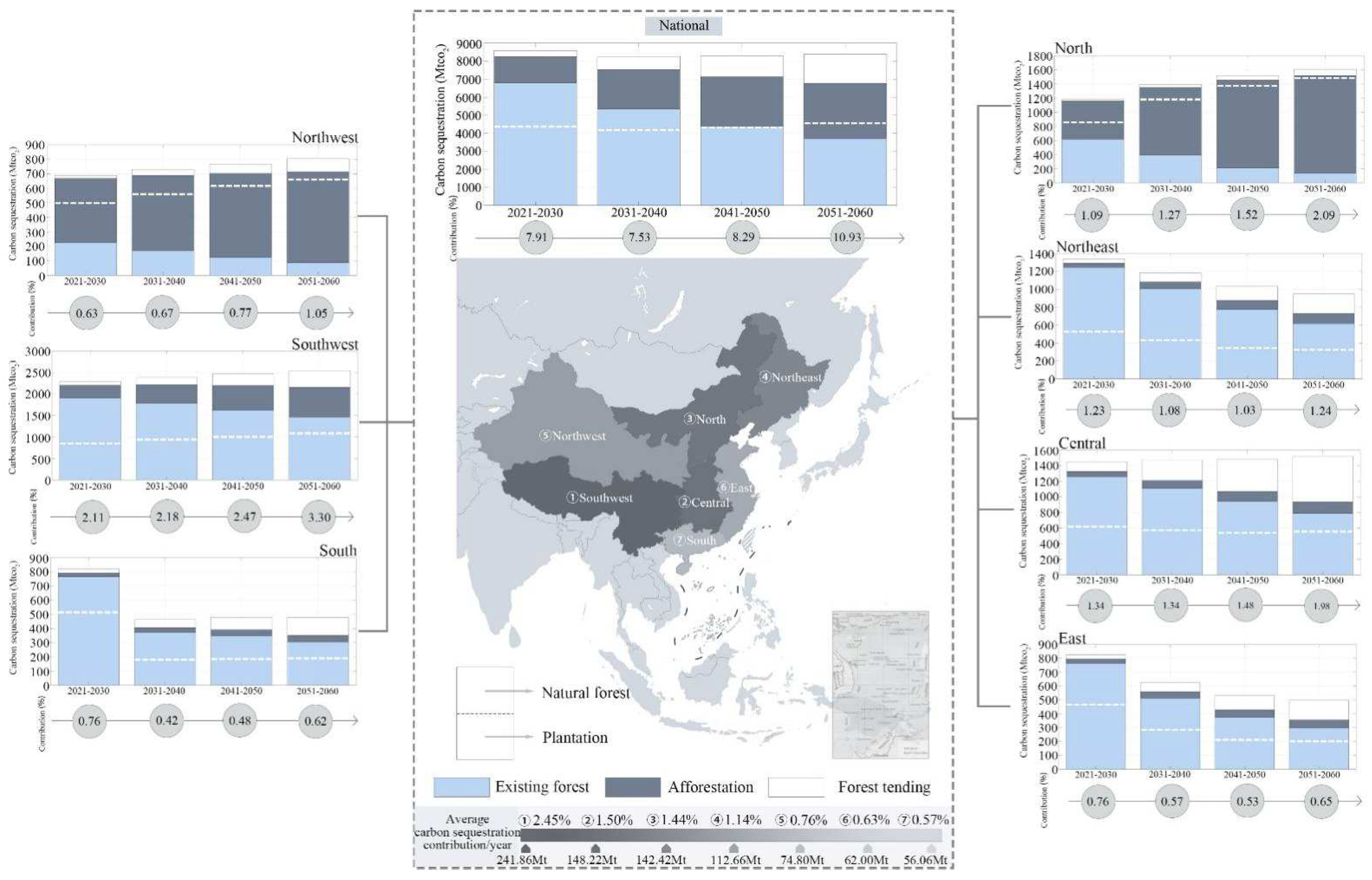

| Region | Afforestation Area (100 ha) | Forest Tending Area (100 ha) | Region | Afforestation Area (100 ha) | Forest Tending Area (100 ha) |
|---|---|---|---|---|---|
| Beijing | 531 | 10,006 | Hubei | 5252 | 174,200 |
| Tianjin | 105 | 1378 | Hunan | 1385 | 217,676 |
| Hebei | 24,733 | 1305 | Guangdong | 3948 | 118,569 |
| Shanxi | 61,147 | 53,184 | Guangxi | 4798 | 64,852 |
| Inner Mongolia | 112,098 | 246,426 | Hainan | 359 | 8845 |
| Liaoning | 4173 | 75,335 | Chongqing | 5104 | 45,357 |
| Jilin | 4432 | 84,215 | Sichuan | 42,374 | 175,035 |
| Heilongjiang | 8772 | 198,694 | Guizhou | 3642 | 56,330 |
| Shanghai | 14 | 375 | Yunnan | 49,092 | 310,608 |
| Jiangsu | 215 | 19,665 | Xizang | 5287 | 53,234 |
| Zhejiang | 2584 | 109,324 | Shaanxi | 49,423 | 101,385 |
| Anhui | 1419 | 41,579 | Gansu | 53,654 | 79,122 |
| Fujian | 3895 | 97,561 | Qinghai | 22,787 | 39,433 |
| Jiangxi | 4784 | 172,460 | Ningxia | 5651 | 6041 |
| Shandong | 9 | 36,621 | Xinjiang | 1087 | 32,114 |
| Henan | 12,154 | 86,571 | Total | 494,908 | 2,717,500 |
| Species | Region | Origin | Young Forest | Half- Mature Forest | Near- Mature Forest | Mature Forest | Over- Mature Forest |
|---|---|---|---|---|---|---|---|
| Type 1 | North | Natural forest | ≤60 | 61–100 | 101–120 | 121–160 | ≥161 |
| Planted forest | ≤40 | 41–60 | 61–80 | 81–120 | ≥121 | ||
| South | Natural forest | ≤40 | 41–60 | 61–80 | 81–120 | ≥121 | |
| Planted forest | ≤20 | 21–40 | 41–60 | 61–80 | ≥81 | ||
| Type 2 | North | Natural forest | ≤40 | 41–80 | 81–100 | 101–140 | ≥141 |
| Planted forest | ≤20 | 21–30 | 31–40 | 41–60 | ≥61 | ||
| South | Natural forest | ≤40 | 41–60 | 61–80 | 81–120 | ≥121 | |
| Planted forest | ≤20 | 21–30 | 31–40 | 41–60 | ≥61 | ||
| Type 3 | North | Natural forest | ≤30 | 31–50 | 51–60 | 61–80 | ≥81 |
| Planted forest | ≤20 | 21–30 | 31–40 | 41–60 | ≥61 | ||
| South | Natural forest | ≤20 | 21–30 | 31–40 | 41–60 | ≥61 | |
| Planted forest | ≤10 | 11–20 | 21–30 | 31–50 | ≥51 | ||
| Type 4 | North | Planted forest | ≤10 | 11–15 | 16–20 | 21–30 | ≥31 |
| South | Planted forest | ≤5 | 6–10 | 11–15 | 16–25 | ≥26 | |
| Type 5 | North | Natural forest | ≤30 | 31–50 | 51–60 | 61–80 | ≥81 |
| Planted forest | ≤20 | 21–30 | 31–40 | 41–60 | ≥61 | ||
| South | Natural forest | ≤20 | 21–40 | 41–50 | 51–70 | ≥71 | |
| Planted forest | ≤10 | 11–20 | 21–30 | 31–50 | ≥51 | ||
| Type 6 | North/South | Natural forest | ≤40 | 41–60 | 61–80 | 81–120 | ≥121 |
| Planted forest | ≤20 | 21–40 | 41–50 | 51–70 | ≥71 | ||
| Type 7 | South | Planted forest | ≤10 | 11–20 | 21–25 | 26–35 | ≥36 |
| Type 8 | North | Natural forest | ≤50 | 51–90 | 91–110 | 111–150 | ≥151 |
| Planted forest | ≤30 | 31–45 | 46–60 | 61–90 | ≥91 | ||
| South | Natural forest | ≤40 | 41–60 | 61–80 | 81–120 | ≥121 | |
| Planted forest | ≤20 | 21–35 | 36–50 | 51–70 | ≥71 | ||
| Type 9 | North | Natural forest | ≤40 | 41–60 | 61–80 | 81–120 | ≥121 |
| Planted forest | ≤15 | 16–28 | 29–35 | 36–50 | ≥51 | ||
| South | Natural forest | ≤40 | 41–60 | 61–80 | 81–120 | ≥121 | |
| Planted forest | ≤12 | 13–25 | 26–33 | 34–48 | ≥49 |
| Tree Species | BEF * | Tree Species | BEF * |
|---|---|---|---|
| Eucalyptus (Eucalyptus robusta Smith.) | 1.151 | Larch (Larix gmelinii (Rupr.) Kuzen.) | 1.416 |
| Cypress (Cupressus funebris Endl.) | 1.535 | Horsetail pine (Pinus massoniana Lamb.) | 1.218 |
| Akamatsu (Pinus densiflora Sieb. et Zucc.) | 1.402 | Nanmu (Phoebe zhennan S. Lee et F. N. Wei) | 1.474 |
| Lime (Tilia tuan Szyszyl.) | 1.407 | Soft broad tree | 1.559 |
| Alpine Pine (Pinus densata Mast.) | 1.651 | Cedar (Cunninghamia lanceolata (Lamb.) Hook.) | 1.093 |
| Exotic pine (pinus elliottii) | 1.416 | Hemlock (Tsuga chinensis (Franch.) Pritz.) | 1.347 |
| Red pine (Pinus koraiensis Sieb. et Zucc.) | 1.377 | Polar (Populus L.) | 1.441 |
| Huashan pine (Pinus armandii Franch.) | 1.717 | Hard broad tree | 1.270 |
| Birch (Betula) | 1.180 | Chinese red pine (Pinus tabuliformis Carriere.) | 1.571 |
| Broadleaf mixed forests | 1.514 | Yunnan pine (Pinus yunnanensis Franch.) | 1.585 |
| Fir (Abies fabri (Mast.) Craib) | 1.286 | Spruce (Picea asperata Mast.) | 1.264 |
| Oak (Quercus acutissima) | 1.587 | Coniferous mixed forests | 1.587 |
| Willow (Salix babylonica L.) | 1.821 | Mixed coniferous and broad-leaved forest | 1.656 |
| Cryptomeria fortunei (Cryptomeria japonica var. sinensis Miquel) | 1.744 | Sphagnum pine (Pinus sylvestris var. mongolica Litv.) | 1.827 |
| 2021–2025 | 2026–2030 | 2031–2035 | 2036–2040 | 2041–2045 | 2046–2050 | 2051–2055 | 2056–2060 | |
|---|---|---|---|---|---|---|---|---|
| Population | 0.275 | 0.050 | −0.125 | −0.200 | −0.275 | −0.350 | −0.568 | −0.704 |
| GDP per capita | 6.195 | 5.405 | 4.845 | 4.165 | 3.735 | 3.345 | 2.581 | 1.996 |
| Urbanization rate | 1.285 | 0.935 | 0.455 | 0.440 | 0.260 | 0.240 | 0.000 | 0.000 |
| Energy intensity | 3.210 | 3.010 | 2.860 | 2.760 | 2.660 | 2.580 | 2.379 | 2.242 |
| Proportion of non-fossil energy consumption | 0.051 | 0.050 | 0.068 | 0.051 | 0.041 | 0.034 | 0.029 | 0.028 |
| Region | Species | Origin | p | q | z | RMSE | |
|---|---|---|---|---|---|---|---|
| Northeast | Mixed coniferous forests | Natural | 309.60 | 4.95 | 0.57 | 0.97 | 14.04 |
| East | Mixed coniferous forests | Planted | 240.40 | 7.52 | 0.07 | 0.93 | 19.47 |
| North | Oak (Quercus acutissima) | Natural | 140.70 | 4.07 | 0.05 | 0.96 | 7.47 |
| South | Rubber (Quercus palustris Münchh) | Planted | 206.90 | 6.68 | 0.05 | 0.99 | 3.61 |
| Central | Cedar (Cunninghamia lanceolata (Lamb.) Hook.) | Planted | 209.80 | 4.26 | 0.11 | 0.91 | 17.06 |
| Northwest | Cypress (Cupressus funebris Endl.) | Natural | 151.10 | 2.78 | 0.02 | 0.95 | 7.29 |
| Southwest | Mixed coniferous forests | Natural | 259.90 | 4.87 | 0.04 | 0.99 | 3.13 |
| Region | Province | 2021 | 2030 | 2040 | 2050 | 2060 |
|---|---|---|---|---|---|---|
| Southwest | Sichuan | 1686.17 | 1913.11 | 2138.94 | 2365.93 | 2594.31 |
| Guizhou | 244.16 | 319.27 | 397.29 | 474.55 | 549.71 | |
| Yunnan | 861.95 | 1048.22 | 1287.04 | 1545.63 | 1829.50 | |
| Xizang | 1234.71 | 1323.70 | 1409.07 | 1485.81 | 1555.73 | |
| Chongqing | 153.93 | 186.27 | 221.87 | 255.84 | 290.17 | |
| Subtotal | 4180.93 | 4790.58 | 5454.23 | 6127.77 | 6819.41 | |
| North | Beijing | 22.56 | 29.01 | 34.05 | 37.94 | 41.88 |
| Tianjin | 2.71 | 4.93 | 6.52 | 7.57 | 8.56 | |
| Hebei | 150.23 | 219.74 | 284.60 | 341.52 | 396.54 | |
| Shanxi | 120.25 | 172.15 | 249.91 | 346.25 | 451.53 | |
| Inner Mongolia | 1112.38 | 1303.78 | 1534.33 | 1790.21 | 2063.32 | |
| Subtotal | 1408.15 | 1729.63 | 2109.42 | 2523.51 | 2961.82 | |
| East | Shandong | 85.58 | 128.43 | 159.33 | 181.53 | 201.48 |
| Jiangsu | 90.05 | 110.69 | 121.85 | 128.94 | 135.25 | |
| Anhui | 205.88 | 242.18 | 269.99 | 295.45 | 319.30 | |
| Zhejiang | 309.30 | 354.16 | 394.18 | 430.83 | 464.66 | |
| Fujian | 536.27 | 616.70 | 677.20 | 730.53 | 782.32 | |
| Shanghai | 0.28 | 0.39 | 0.51 | 0.64 | 0.78 | |
| Subtotal | 1227.38 | 1452.55 | 1588.23 | 1767.93 | 1903.80 | |
| South | Guangdong | 367.60 | 457.84 | 507.44 | 561.10 | 617.31 |
| Guangxi | 548.26 | 673.21 | 743.08 | 813.59 | 881.64 | |
| Hainan | 104.76 | 140.09 | 147.20 | 153.95 | 1602.12 | |
| Subtotal | 1047.56 | 1271.14 | 1397.72 | 1528.63 | 1659.16 | |
| Central | Hubei | 276.43 | 364.33 | 461.23 | 565.47 | 674.34 |
| Hunan | 401.70 | 528.31 | 651.11 | 769.28 | 887.88 | |
| Henan | 133.60 | 184.93 | 243.89 | 311.51 | 386.58 | |
| Jiangxi | 437.97 | 568.15 | 691.36 | 806.10 | 917.90 | |
| Subtotal | 1249.70 | 1645.73 | 2047.59 | 2452.36 | 2866.70 | |
| Northwest | Ningxia | 14.48 | 24.56 | 35.48 | 46.42 | 57.38 |
| Xinjiang | 57.25 | 66.27 | 71.67 | 76.87 | 82.74 | |
| Qinghai | 32.30 | 64.70 | 100.61 | 139.44 | 181.24 | |
| Shaanxi | 376.74 | 437.94 | 502.48 | 569.20 | 638.35 | |
| Gansu | 170.99 | 245.96 | 328.51 | 416.15 | 508.05 | |
| Subtotal | 651.76 | 839.45 | 1038.76 | 1248.08 | 1467.77 | |
| Northeast | Heilongjiang | 1532.23 | 1735.78 | 1916.15 | 2074.89 | 2220.53 |
| Jilin | 772.03 | 873.81 | 958.74 | 1027.74 | 1088.79 | |
| Liaoning | 245.95 | 305.99 | 363.17 | 417.29 | 469.91 | |
| Subtotal | 2400.16 | 2915.59 | 3238.06 | 3519.92 | 3779.23 |
| Year | CO2 Emission (Mt) | Year | CO2 Emission (Mt) | Year | CO2 Emission (Mt) | Year | CO2 Emission (Mt) |
|---|---|---|---|---|---|---|---|
| 2021 | 10,418.78 | 2031 | 11,028.40 | 2041 | 10,787.67 | 2051 | 8423.99 |
| 2022 | 10,582.90 | 2032 | 11,017.07 | 2042 | 10,707.51 | 2052 | 8137.10 |
| 2023 | 10,726.36 | 2033 | 11,006.23 | 2043 | 10,600.91 | 2053 | 7904.62 |
| 2024 | 10,837.26 | 2034 | 10,995.44 | 2044 | 10,458.92 | 2054 | 7726.11 |
| 2025 | 10,918.10 | 2035 | 10,984.14 | 2045 | 10,271.90 | 2055 | 7594.91 |
| 2026 | 10,966.05 | 2036 | 10,964.59 | 2046 | 10,043.37 | 2056 | 7506.17 |
| 2027 | 10,993.05 | 2037 | 10,942.97 | 2047 | 9767.20 | 2057 | 7441.39 |
| 2028 | 11,011.77 | 2038 | 10,917.90 | 2048 | 9449.01 | 2058 | 7394.81 |
| 2029 | 11,027.83 | 2039 | 10,887.41 | 2049 | 9104.15 | 2059 | 7361.70 |
| 2030 | 11,040.20 | 2040 | 10,848.78 | 2050 | 8756.37 | 2060 | 7338.35 |
| Year | Actual (Mt) | Predict (Mt) | RE (%) | Year | Actual (Mt) | Predict (Mt) | RE (%) |
|---|---|---|---|---|---|---|---|
| 1999 | 2978.10 | 2974.16 | −0.13 | 2009 | 7656.00 | 7590.16 | −0.86 |
| 2000 | 3052.40 | 3056.55 | 0.14 | 2010 | 8366.40 | 8686.77 | 3.83 |
| 2001 | 3224.30 | 3232.34 | 0.25 | 2011 | 9245.40 | 9209.21 | −0.39 |
| 2002 | 3515.80 | 3267.43 | −7.06 | 2012 | 9501.70 | 9364.20 | −1.45 |
| 2003 | 4154.00 | 3988.34 | −3.99 | 2013 | 9492.90 | 9488.49 | −0.05 |
| 2004 | 4174.70 | 4677.12 | −0.80 | 2014 | 9639.80 | 9640.22 | 0.00 |
| 2005 | 5566.90 | 5510.94 | −1.01 | 2015 | 9644.00 | 9645.40 | 0.02 |
| 2006 | 6197.80 | 6200.34 | 0.04 | 2016 | 9615.00 | 9619.51 | 0.05 |
| 2007 | 6822.20 | 6733.32 | −1.30 | 2017 | 9866.00 | 9866.87 | 0.01 |
| 2008 | 7205.20 | 7124.66 | −1.12 | Mean absolute error | 1.18 | ||
| Emission Scenarios | NDC2016 | NDC2021 | SSP1 | SSP2 | SSP3 | SSP4 | SSP5 |
|---|---|---|---|---|---|---|---|
| Average emission/year (Mt) | 10,543.78 | 9872.28 | 11,549.50 | 11,128.50 | 10,234.00 | 11,087.00 | 11,693.00 |
Publisher’s Note: MDPI stays neutral with regard to jurisdictional claims in published maps and institutional affiliations. |
© 2022 by the authors. Licensee MDPI, Basel, Switzerland. This article is an open access article distributed under the terms and conditions of the Creative Commons Attribution (CC BY) license (https://creativecommons.org/licenses/by/4.0/).
Share and Cite
Chen, Z.; Dayananda, B.; Fu, B.; Li, Z.; Jia, Z.; Hu, Y.; Cao, J.; Liu, Y.; Xie, L.; Chen, Y.; et al. Research on the Potential of Forestry’s Carbon-Neutral Contribution in China from 2021 to 2060. Sustainability 2022, 14, 5444. https://doi.org/10.3390/su14095444
Chen Z, Dayananda B, Fu B, Li Z, Jia Z, Hu Y, Cao J, Liu Y, Xie L, Chen Y, et al. Research on the Potential of Forestry’s Carbon-Neutral Contribution in China from 2021 to 2060. Sustainability. 2022; 14(9):5444. https://doi.org/10.3390/su14095444
Chicago/Turabian StyleChen, Zheng, Buddhi Dayananda, Brendan Fu, Ziwen Li, Ziyu Jia, Yue Hu, Jiaxi Cao, Ying Liu, Lumeng Xie, Ye Chen, and et al. 2022. "Research on the Potential of Forestry’s Carbon-Neutral Contribution in China from 2021 to 2060" Sustainability 14, no. 9: 5444. https://doi.org/10.3390/su14095444
APA StyleChen, Z., Dayananda, B., Fu, B., Li, Z., Jia, Z., Hu, Y., Cao, J., Liu, Y., Xie, L., Chen, Y., & Wu, S. (2022). Research on the Potential of Forestry’s Carbon-Neutral Contribution in China from 2021 to 2060. Sustainability, 14(9), 5444. https://doi.org/10.3390/su14095444






